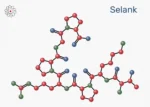Peptides are short stretches of amino acids that mimic their full-length counterparts’ functions. They can be natural or synthetic and find research applications in various physiological aspects. Proper peptide storage is crucial for maintaining the integrity of laboratory results. Appropriate storage practices help maintain peptides for a long time and guard against contamination, oxidation, and degradation that can damage your peptides and hamper the success of the experiments. The stability of peptides depends on their susceptibility to degradation. However, knowledge and implementation of the best practices for storage enhance their stability and integrity.
Peptides should be stored in a cold area and away from light. If the peptides are meant to be used immediately or within several days, weeks, or months, short-term refrigeration under 4C (39F) is an acceptable temperature. Lyophilized molecules remain stable at room temperatures for several weeks or more. Especially if they are used within weeks, room temperature storage usually is sufficient.
Researchers avoid repeated freeze-thaw cycles to ensure the proper stability of the peptides. Repeated freeze-thaw cycles can make the molecules prone to faster degradation. Frost-free freezers should also be avoided to store peptides as defrosting cycles lead to fluctuation of temperatures.
Eliminating the risk of Moisture Contamination
Moisture contamination occurs when vials of peptides are opened immediately after bringing them out to room temperature from frozen conditions. The peptides tend to absorb moisture from the cool air inside the container or the inside of the container. Hence, the best practice would be to allow the peptide to equilibrate to room temperature before opening.
Eliminating the risk of oxidation
It is important to minimize a peptide’s exposure to the air. A peptide container must be kept closed as much as possible. After the required quantity of peptides has been removed, the container should be resealed under an atmosphere of dry, inert gas (example: nitrogen or argon) will reduce the potential for the remaining molecule to become oxidized. The following peptide amino acids are most prone to air oxidation:
- C (Cysteine)
- M (Methionine)
- W (Tryptophan)
As peptide stability largely gets influenced by freeze-thaw cycles and exposure to air, researchers prefer to determine the requirement of every experiment and segregate the required amounts accordingly into separate vials. This practice is extremely beneficial against peptide degradation.
Containers To Utilize for Peptide Storage
Containers for peptide storage should be completely clean, clear, and structurally sound. They should also be chemically inert so that they do not react with the peptide solution inside and are appropriately sized to store the amount of peptide in them.
Both glass and plastic vials are commonly used:
- Plastic Vials: Can be either composed of polystyrene and those made of polypropylene. Polystyrene vials are generally clear but not chemically inert, whereas polypropylene vials are generally translucent but chemically resistant.
- Glass Vials: These are best suited for peptide storage and are the preferred storage method; however, they often run the risk of breakage during shipment. Hence peptides are sometimes shipped in inert plastic containers and then transferred to glass ones for storage and vice versa.
Accelerated Degradation During Peptide Storage In A Solution
The shelf life of peptides improves when stored in lyophilized form and reduces drastically when dissolved in solvents. Peptide solutions are further prone to bacterial contamination and degradation. Peptides containing Cys, Met, Trp, Asp, Gln, and N-terminal Glu in their sequences have especially short shelf life when they get reconstituted. However, if it is compulsory to store the peptides in solution, sterile buffers at pH 5-6 are recommended, and the peptide solution should be aliquoted to avoid repeated freezing and thawing. Peptide solutions have been stable for up to 4 to 5 weeks when refrigerated at 4C (39F), but those molecules with inherent instability should be kept frozen when not in use.
Peptides Storage Containers
Containers for peptide storage should be completely clean, clear, and structurally sound. They should also be chemically inert so that they do not react with the peptide solution inside and are appropriately sized to store the amount of peptide in them. Both glass and plastic vials are commonly used; plastic vials can be either composed of polystyrene or polypropylene. Polystyrene vials are generally clear but not chemically inert, whereas polypropylene vials are generally translucent but chemically resistant. High-quality glass containers are best suited for peptide storage, but they often risk breakage during shipment. Hence peptides are sometimes shipped in inert plastic containers and then transferred to glass ones for storage and vice versa.
What To Remember When Storing Peptides
Remember to avoid repeated freezing and thawing of peptides or overexposure to air when storing peptides. Peptides are sensitive to light; remember to lessen exposure to it. Avoid long-term solution storage as well.
*It is preferable to store in dark, dry, or cold places. In addition, peptides should be aliquoted following the specific experimental requirements.
Disclaimer: The products mentioned are not intended for human or animal consumption. Research chemicals are intended solely for laboratory experimentation and/or in-vitro testing. Bodily introduction of any sort is strictly prohibited by law. All purchases are limited to licensed researchers and/or qualified professionals. All information shared in this article is for educational purposes only.






